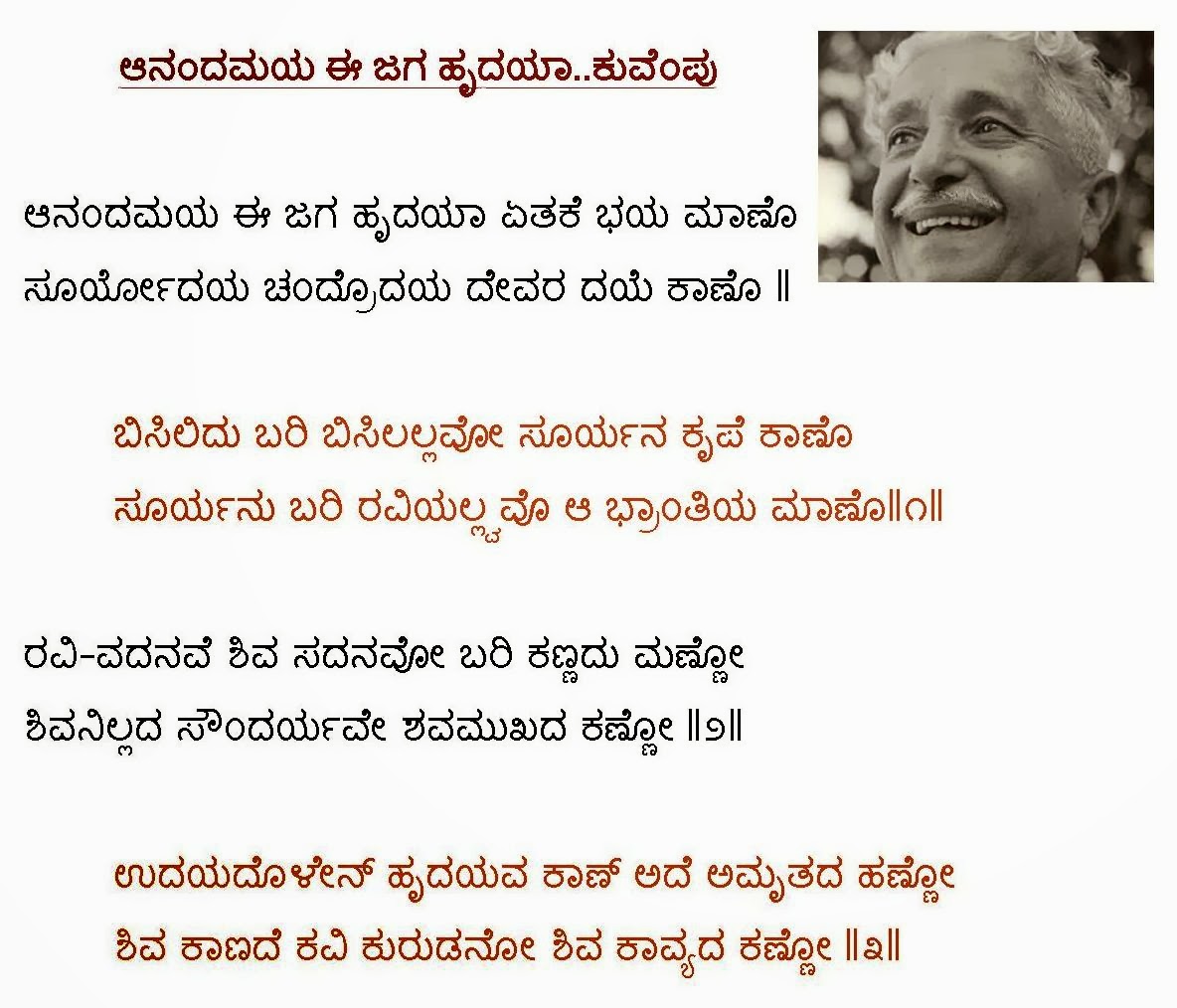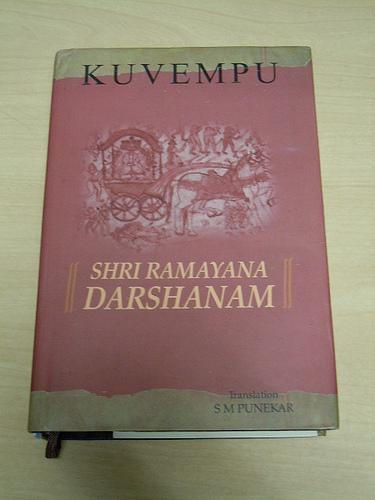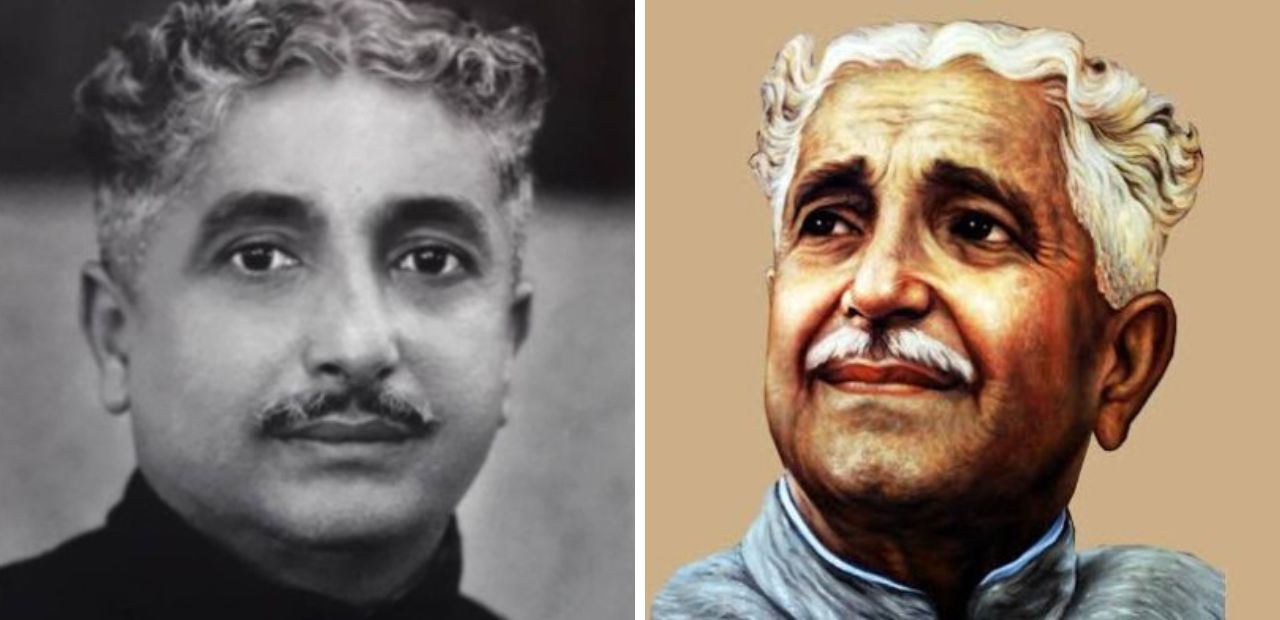Kuppalli Venkatappa Puttappa, called just Kuvempu with love, was one of the most prominent writers of Kannada literature. Born on December 29, 1904, in a small village in the Shimoga district.
He was greatly influenced by western writers like Wordsworth, Shelley, Milton, Tolstoy and others. He was also influenced by the preachings of Ramakrishna Paramahamsa and Swami Vivekananda.
While studying English literature, he wrote a collection of poems called the Beginner’s Muse. However, an Irish poet, James Cousins, advised him to write in his mother tongue, Kannada.
Kuvempu’s works
Kuvempu wrote approximately 68 works, more than half of which comprise poetry. Kolalu, Navilu, and Panchajanya are some of his best poetic creations. Other famous works include Amalana Kathe which is a collection of narrative poems, and the epic poem Shri Ramayana Darshanam which is a tale of Valmiki’s Ramayana.
Kuvempu wrote as many as 14 dramas. This includes epics like Jalagara, Beralge Koral, Smashana Kurukshetra, Shudra Tapasvi, etc.
What makes Kuvempu still relevant today?
Once you attain an afterlife, you leave behind everything but what stays back are your memories, your works, your contributions, etc. Kuvempu is a creator of such notable works that still stays relevant in society today! Society can resonate with it and that’s what inspires one to develop an understanding.
His stance on caste-based discrimination
President Droupadi Murmu spoke about Kuvempu in her first address to the nation, stating “The great nationalist poet Kuvempu, who enriched Indian literature through Kannada language, had written: Naanu aliwe, Neenu aliwe, Namma elubugala mele Mooduvudu – Mooduvudu Navabharatda leele, which means, ‘I will pass. So will you. But on our bones will arise the great tale of a new India.”
That India’s first President from a tribal community resonates with Kuvempu’s writing as he spoke against the caste system and other systems that were holding the society back.
“Have you heard the tunes of the shepherd’s flute in the summertime? When its melody fills your ears, do you check the lineage of the bamboo? Then, why oh why do you cry out and make noise about caste?,” wrote Kuvempu in his poem Kula, a hard-hitting commentary on caste-based discrimination in India. He saw religion and caste as a prison, a “noose” throttling the “development of our nation.” He fought against superstition and for gender equality.

Image Courtesy: scroll.in
His affiliation towards nature
Right from childhood, Kuvempu had a great affinity towards natural surroundings. He believed that one feels spiritually elevated in a natural environment.
‘Kai Mugidu Olage Ba, Idu Sasyakashi’ (meaning ‘Bow and enter, this is Mother Nature’s divine place’) is a notation that is prominently displayed at the entrance of Lalbagh, a famous botanical garden in Bangalore.
DejaGou who has recently written a book on the poet titled ‘Soundarya Yogi Kuvempu’, says, “In nature, Kuvempu used to search God’s beauty and kindness. He can be called the gifted child of Mother Nature or The Prakrutimata. The inspiration for the flow of his beautiful poems at such a younger age was definitely the serene nature of Malenadu, the hilly district of Teerthahalli and its surroundings. Kuvempu could understand the true philosophy reflected by Mother Nature. Each of his poems on a flower or a tree mirrors a unique tenderness. Kuvempu’s first Kannada poem, ‘Poovu’ or ‘The Flower’ proves that. Munjane Manjinolu Pasuralli nadevaaga Anjisuva Sanjeyolu Usirannu yelevaaga Yele poove aalisuve which roughly translates to ‘When the morning mist walks among the pastures, when the evening draws its breath in the evening, the leaf listens to the breeze.’

Image Courtesy: madhurageete.blogspot.com
Kuvempu’s Sarvodaya and Humanism
Kuvempu’s magnum opus Shri Ramayana Darshanam remains an immortal work of art. Kuvempu recreates Valmiki’s Ramayana in an unorthodox manner, giving all the different characters whole new dimensions. In his adaptation of the Ramayana, Ram also jumps into the fire along with Sita to test himself, defining Kuvempu’s vision of ‘Sarvodaya’.

“In the book, Kuvempu expresses the idea of Sarvodaya, wherein every last individual has to be a part of the development process. Kuvempu penned the epic when India was struggling for freedom. This is how Kuvempu became a part of the freedom struggle – through his writing,” said CP Krishnakumar.
Kuvempu was so poetic in every manner that he even gave a poetic name to mundane objects. He called his house “Udayaravi” (rising sun) and called farmers “Uluva Yogi” (tilling yogi).
Kuvempu’s Achievements and Recognition
Kuvempu is a Kannada poet to be recognised as ‘Rashtrakavi’ in 1964. His poem Jaya Bharata Jananiya Tanujate also went on to become Karanataka’s state anthem. He was the chairperson of the Sahitya Sammelan, held in Dharwad in 1957. He was presented with the Sahitya Akademi Award in 1955 and the Padma Bhushan in 1958. The Jnanapith Award was conferred on him in 1964. The universities of Mysore and Bangalore in Karnataka have conferred him with doctorate degrees on different occasions.
Kuvempu’s writings are still relevant today because most of them talk about the issues of the country which is to date holding the society back. There is a lot one can learn and adapt from his writing’s and his death in 1994, left a void that cannot be fulfilled. The ‘Wordsworth of Kannada’ will live forever in our hearts…
ALSO READ:-



















































































